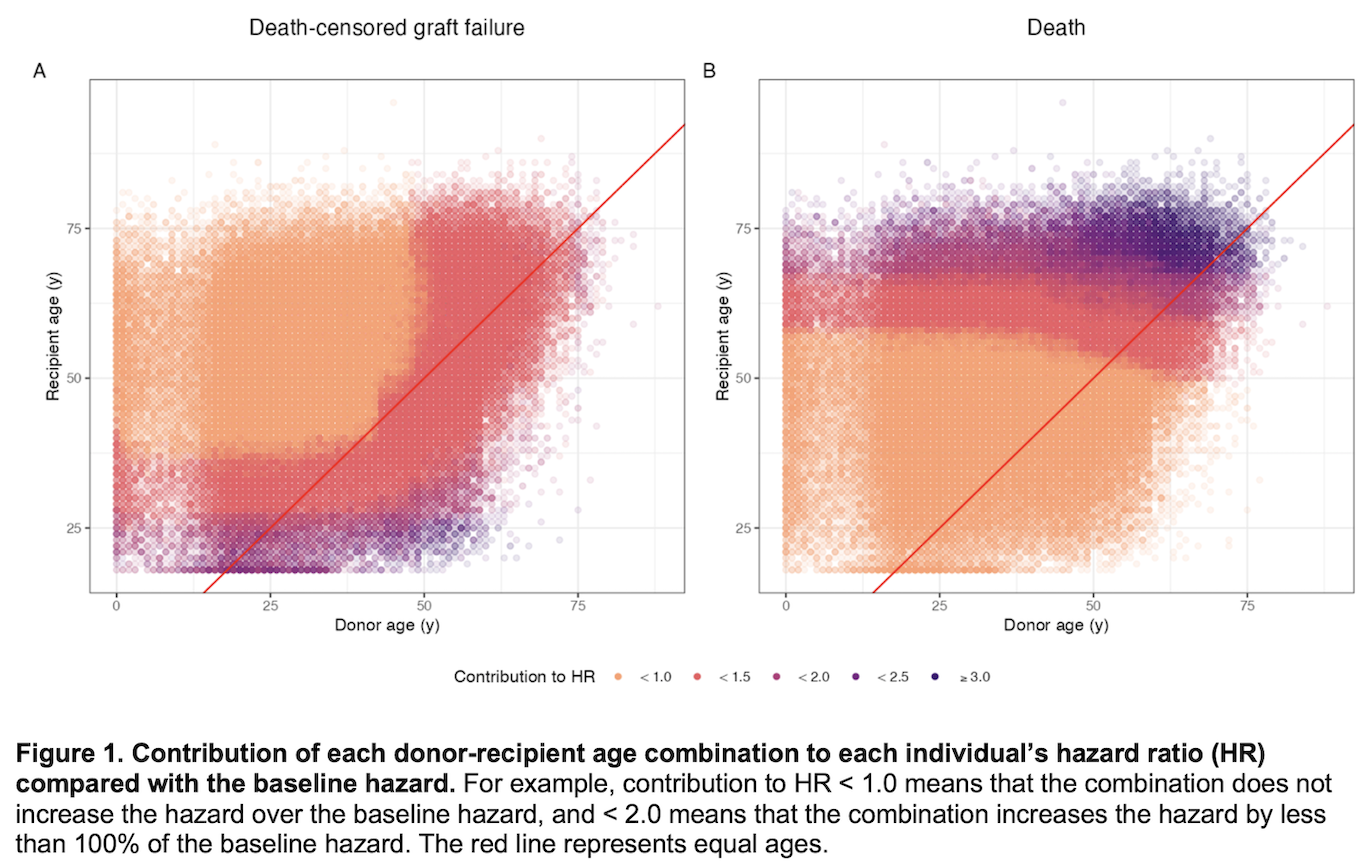Donor and Recipient Age Matching for Kidney Transplantation: A Machine Learning Approach
Johns Hopkins, Baltimore, MD
Meeting: 2022 American Transplant Congress
Abstract number: 704
Keywords: Age factors, Graft failure, Kidney transplantation, Mortality
Topic: Clinical Science » Kidney » 31 - Kidney Deceased Donor Allocation
Session Information
Session Name: Kidney Deceased Donor Allocation
Session Type: Poster Abstract
Date: Saturday, June 4, 2022
Session Time: 5:30pm-7:00pm
 Presentation Time: 5:30pm-7:00pm
Presentation Time: 5:30pm-7:00pm
Location: Hynes Halls C & D
*Purpose: Under the concept of ‘longevity matching,’ the Kidney Allocation System favors matching younger deceased donors with younger kidney transplant (KT) candidates. However, it remains unclear whether the current donor-recipient age matching practice yields the ideal post-KT outcomes, considering the higher risk of graft loss in younger recipients. We aimed to characterize the donor-recipient age interactions on graft and recipient survival using machine learning (XGBoost) and to determine potential cutoffs for donor-recipient age matching.
*Methods: We selected adult (≥18y) kidney-only deceased donor KT recipients using SRTR data 2005-2019. We measured the contribution of each age combination to the hazard of death-censored graft failure (DCGF) or death with XGBoost. The contribution to the hazards quantifies how much each combination increases or decreases the hazards compared with the baseline hazard. The donor-recipient age interactions identified in these analyses were further tested using Cox proportional hazard models.
*Results: Our study included 161,872 KT recipients. The machine learning model identified 28, 40, 50, and 61 as best cutoffs of recipient age (Figure 1). Using these cutoffs, we stratified the cohort by recipient age. The impact of donor age on DCGF was significantly different across the recipient age strata (Figure 1A, Table 1). For example, per 10-year increase in donor age, the hazard of DCGF increased by 1.11-fold (95% CI, 1.07-1.15) among younger recipients (<28y) but by 1.24-fold (95% CI, 1.22-1.26) among older recipients (≥61y, interaction p<0.0001) (Table 1). For death, there was no notable donor-recipient age interaction (Figure 1B, Table 1).
*Conclusions: While older donor age was associated with worse KT outcomes, its impact was less pronounced among younger recipients. Our findings do not support the longevity matching as a strategy to optimize post-KT outcomes.
To cite this abstract in AMA style:
Kim J, Ahn J, Massie A, Segev D, Bae S. Donor and Recipient Age Matching for Kidney Transplantation: A Machine Learning Approach [abstract]. Am J Transplant. 2022; 22 (suppl 3). https://atcmeetingabstracts.com/abstract/donor-and-recipient-age-matching-for-kidney-transplantation-a-machine-learning-approach/. Accessed December 27, 2025.« Back to 2022 American Transplant Congress


